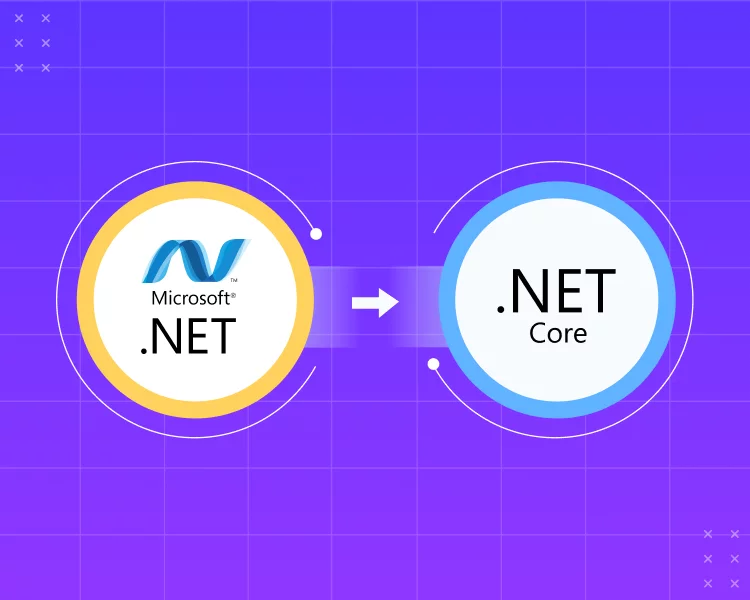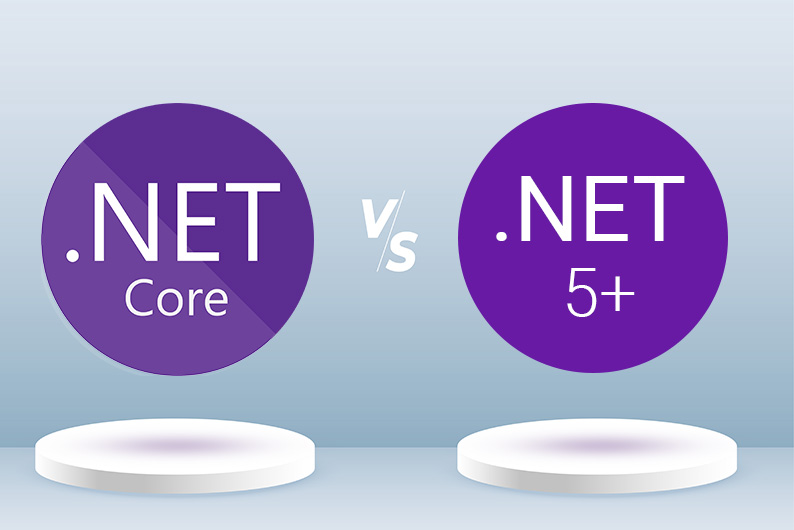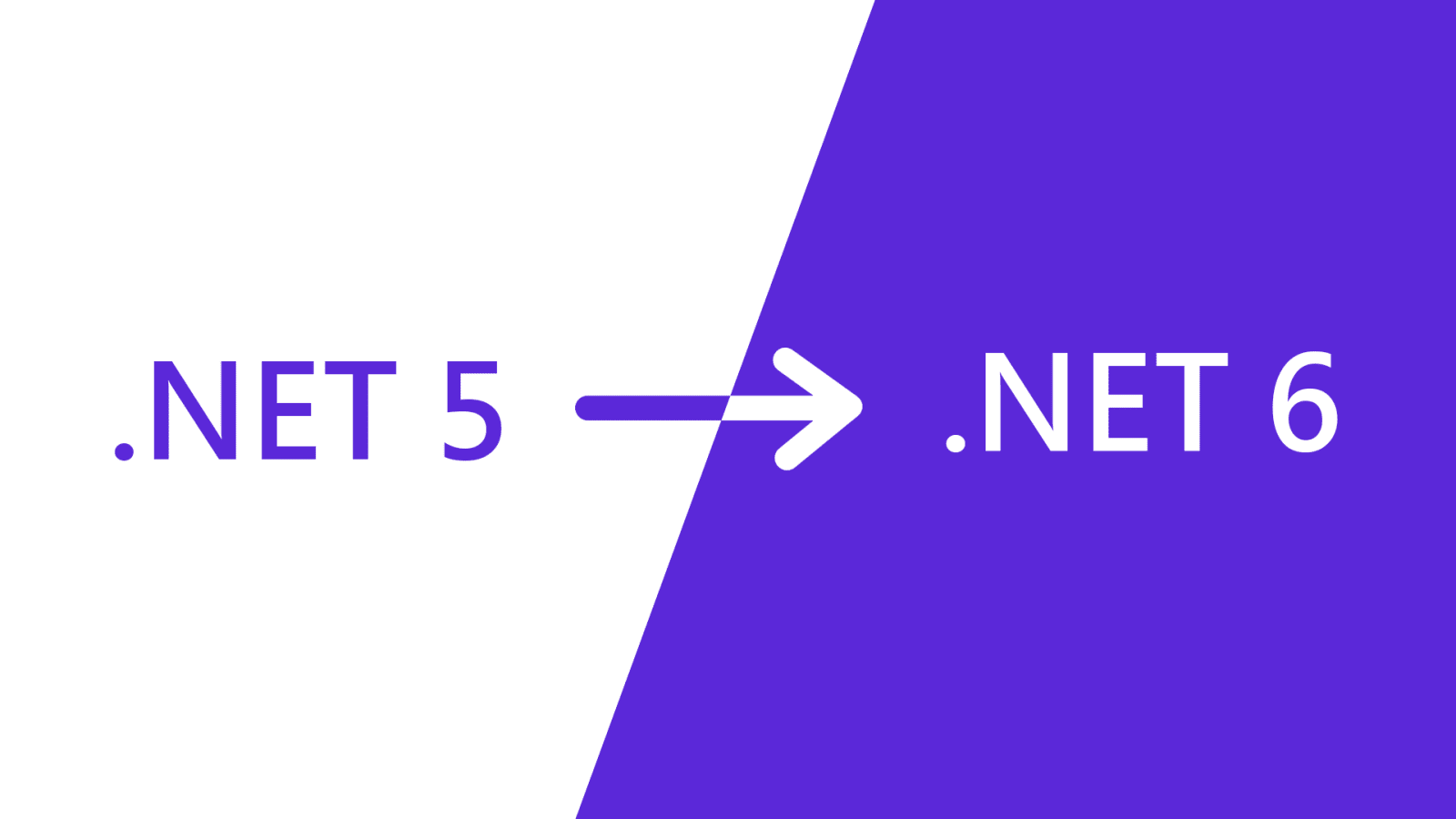The technology world widely recognizes .NET for its prevalence within businesses, with many organizations seeking top-tier specialists with extensive .NET knowledge. Yet, deciding which .NET technology to use for your project, .NET Core or .NET 5, can pose a challenge. Discover the differences between .NET Core and .NET 5+ in this article in order to select the ideal .NET version for your venture.
.NET Core Overview
.NET constitutes a free, open-source platform designed for developers. It allows them to develop different kinds of software applications, ranging from web-specific apps and cloud-based solutions to microservices, Internet of Things (IoT) applications, gaming industry programs, as well as apps catered towards desktop and mobile platforms. This robust platform efficiently operates across various systems like Windows, macOS, and Linux.

Microsoft’s .NET Core initiative represents an updated framework meticulously designed to deliver a high-speed, modular, and lightweight structure that supports multiple platforms. The .NET Core framework is equipped with key foundational features for executing a standard .NET Core-based application effortlessly.
.NET development services can facilitate the employment of NuGet packages to integrate complex features. They can tailor their use of these packages in line with their applications’ momentary needs. By doing so, an improvement in the application’s performance is achieved. This is reflected by faster processing speed, less memory consumption, and generally elevated maintainability and serviceability of the application.
If you are contemplating app development and choosing between the .NET framework and .NET Core, we recommend the latter. The preference for .NET Core stems from its multiple advantageous features. It is more adept at handling multi-platform requirements and is considerably more efficient when developing microservices. Moreover, the availability of Blazor in .NET allows you to craft engaging client user interfaces effectively.
Scope and Constraints of .NET Framework
The .NET framework exhibits several constraints. It is crafted exclusively for Windows-oriented platforms and necessitates developers to utilize distinct APIs for varying devices and appliances. In addition, alterations to this platform could influence all applications dependent on it.
The Objectives of .NET Core
The objectives of developing .Net core and the main aim towards introducing new features like free or open-source, multiple-platform frameworks. This .Net Core is suitable to run in various applications, which range from compact mobile tablets to huge data centers.
Understanding .NET 5
Microsoft has announced that moving forward, the distinction between “.NET Framework” and “.NET Core” will cease, merging into one unified platform—”.NET 5.” The primary objective of this new system is to enable developers to use C#, F#, and common .NET APIs to develop various applications across different chip architectures on numerous operating systems.
Microsoft has also emphasized the platform’s high adaptability. It is designed to provide developers with the flexibility to conveniently and quickly adjust build configurations, enhancing how they construct their apps in Visual Studio, Azure DevOps, Visual Studio Code, Visual Studio for Mac, and even directly via the command line. The freshly introduced platform is anticipated to facilitate effortless and speedy development.
All of .NET Core’s successful features will persist, including:
- Being open source and fostering community involvement on GitHub
- Enabling cross-platform implementation
- Offering support to exploit platform-specific aspects, such as Windows Forms and WPF on Windows, as well as Xamarin’s native bindings to each native platform
- Exceptional performance
- Allowing side-by-side installation
- Maintaining small project files (SDK-style)
- Providing a proficient command-line interface (CLI)
- Continuing integration with Visual Studio, Visual Studio for Mac, and Visual Studio Code.
Analyzing Differences: .NET 5 in the .NET Core Family vs .NET Framework
When we observe .NET 5, a member of the .NET Core family, our attention is drawn to numerous differences in relation to the .NET Framework. Notably, differences between .NET Core and .NET 5+ have seen significant improvements compared to .NET Core, indicating a considerable evolution from the .NET Framework, with visible enhancements in functionality. Let’s outline the critical differences in the technical capabilities of these options.
- Cross-platform Accessibility: With .NET 5, there is the benefit of adopting a truly platform-agnostic approach, which has the potential to elevate the cloud and microservices sectors. Further, this flexibility also aids in improving local infrastructure and in optimizing costs.
- C# Modifications: In .NET 5, professionals gain access to the latest versions and functionalities of the C# programming language.
- Source Generators. This unique feature in .NET 5 enables running code to inspect the program and generate additional files for compilation along with the rest of the code.
- Command-line Interface: Text-based User Interfaces (UIs) are an integral part of .NET 5, facilitating easy file management as well as interaction with computer systems.
Enhanced Performance
.NET Core vs. .NET 5+, while it has been seen that .NET 5 incorporates outstanding performance enhancements. One key instance of this is the substantial improvement seen in the JsonSerializer performance within .NET 5.0. These upgrades in runtime and library functionalities have been discussed in detail by Stephen Toub in his recent post. Additionally, gRPC has seen a number of intriguing enhancements.
Accelerated Development with Enhanced Throughput & Productivity
In the past, the .NET platform employed Just-In-Time (JIT) compilers to convert Intermediate Language (IL) code into highly efficient machine code. Today, Microsoft has successfully crafted a JIT-based managed runtime that handles high throughput effectively and facilitates speedier and smoother development.
The utilization of JIT compilers proves exceedingly beneficial for the client and extended cloud scenarios. These compilers can rapidly generate code specific to a particular machine setup, embracing explicit CPU instructions. Interestingly, JITs have the capability to re-compile methods during runtime to produce code. This ensures software development firms can concurrently create highly-optimized versions of the same code, maintaining an excellent balance between flexibility and performance.
Utilizing development resources such as the dotnet watch tool or the edit and continue function often necessitates frequently compiling and loading multiple instances in a singular process. This is where the utility of Just-In-Time (JIT) compilation becomes evident, eliminating the need for constant process restarts.
In the upcoming .NET Core vs. .NET 5+ iteration, the standard interaction model will predominantly be the Just-In-Time (JIT) founded CoreCLR runtime. However, two distinctive instances where this will not apply happen to be iOS and client-side Blazor, both of which necessitate Ahead-Of-Time (AOT) native compilation.
Runtime Experiences Overview
Mono is recognized as the initial cross-platform .NET implementation. It initially started as an open-source .NET Framework and later shifted its focus to target mobile devices due to the increasing popularity of iOS and Android devices. Presently, Mono forms part of the runtime for Xamarin.
On the other hand, CoreCLR is the designated runtime for .NET Core and is primarily designed to support cloud applications. However, it is now gaining popularity in Windows desktops, the Internet of Things (IoT), and machine learning applications.
We are observing substantial similarity between these two runtimes. Still, they are distinguished by specific features and capabilities. With the introduction of the officially released .NET 5, developers now have the flexibility to select the most suitable runtime experience. Both CoreCLR and Mono are capable replacements for each other, rendering similar performance.
Reasons to Consider Upgrading to .NET 5+
Having clarified the primary differences between .NET Core and .NET 5+, it’s natural to question why advancing to .NET 5+ could be a strategic decision for your software development firm. Here are some persuasive arguments:
- Performance Improvements: The enhancements in the performance of .NET 5+ are significant. These improvements allow applications to run more rapidly and efficiently, potentially leading to cost savings and elevated customer experiences.
- Improved Language Characteristics: New language features have enabled your development crew to script more descriptive and safer code. Such advancements can aid in decreasing the chances of bugs and optimizing maintainability.
- Cross-Platform Deployment: Should your application require operation on diverse operating systems, .NET 5+ offers comprehensive platform backing, which simplifies both the development and deployment processes.
- Containerization: With the .NET 5+ version, you are able to conveniently containerize your .NET applications, thus immensely improving your software’s scalability and portability. This makes it ideally suitable for deployments in cloud-based environments.
- Long-Term Support: Be assured of Long-Term Support (LTS) for .NET 6, .NET 7, and all forthcoming versions of .NET 5+, which surely secures your applications for an extended period.
The dynamic nature of .NET development services can be easier to maneuver with a reliable software development firm like IntelliSource on your side. The team at IntelliSource contains accomplished developers proficient in the complexities of .NET 5+ and its prior versions. Their guidance during the migration process facilitates a smooth transition.
IntelliSource excels at customized solutions based on .NET to meet your distinct business objectives. Their expertise extends to various domains, whether you need web applications, mobile applications, or enterprise-level software. Their skilled team can manage it all.
The shift from .NET Core to .NET 5+ signifies a notable development in the realm of software creation. This transition introduces enhanced performance, improved language features, and expanded platform support, positioning .NET 5+ as an attractive option for contemporary app development.
Maximizing these new features and navigating the intricate software development terrain requires a reliable partner. Consider partnering with IntelliSourcea reputable software development firm known for delivering customized solutions for your business objectives. Opting for IntelliSource as your development ally allows you to tap into the full power of .NET 5+ and maintain a competitive edge in the dynamic tech world. Command the future of software creation with IntelliSource at your corner.


